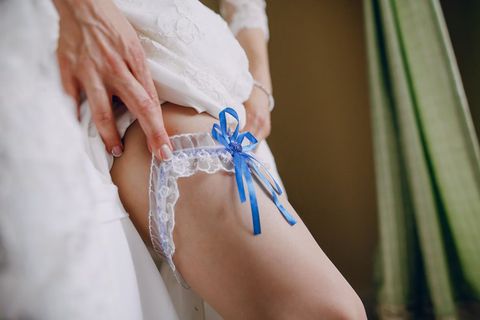Importance of Hair Style Trends
Hair style trends matter because they influence both personal identity and collective culture. They affect people across different age groups, genders, and communities. Hairstyles can:
Shape first impressions in professional, social, and personal interactions.
Reflect cultural heritage, religious values, and personal beliefs.
Boost self-confidence and support mental well-being.
Represent shifts in fashion and beauty industries, influencing other sectors such as cosmetics, fashion accessories, and media.
These trends also solve everyday challenges. Practical hairstyles address issues of convenience, weather conditions, and professional needs. Protective hairstyles, such as braids or twists, protect hair from damage while maintaining style. Hairstyles for special occasions help people celebrate identity and milestones, blending tradition with creativity.
Recent Updates in Hair Style Trends
The past year has seen several changes in hairstyle trends, shaped by fashion runways, social media, and cultural shifts. Some of the most notable updates include:
2024–2025 Short Hair Revival: Pixie cuts, bobs, and layered short styles have become popular again, especially among younger professionals. This shift reflects a move toward low-maintenance yet stylish appearances.
Natural Hair Movement Growth (2024): There has been increased celebration of natural curls, waves, and textures across different communities. This has been amplified by campaigns promoting inclusivity in beauty standards.
Sustainable Hair Care Practices (2025): Eco-conscious consumers are adopting hairstyles that require fewer chemical treatments, leading to a rise in natural and protective styles.
Color Experiments: Bold shades such as copper, platinum blonde, and vibrant pastel colors are trending in 2025, influenced by fashion influencers on TikTok and Instagram.
Hybrid Hairstyles: Mixing traditional and modern elements—such as combining braids with contemporary cuts—has gained attention in global fashion weeks.
The evolution of hairstyle trends demonstrates how beauty standards adapt to social conversations, convenience, and cultural pride.
Laws or Policies Affecting Hair Style Trends
Hairstyles may appear to be a matter of personal choice, but they are often influenced by cultural norms, workplace policies, and even government regulations.
Workplace Dress Codes: Many companies have policies that affect acceptable hairstyles, particularly in formal industries like law, banking, and aviation.
School Regulations: Some schools across countries maintain strict guidelines for students, limiting hair length, hair dye, or specific cultural hairstyles.
CROWN Act (United States, 2020 onward): This law prohibits discrimination based on natural hair textures and protective hairstyles in workplaces and schools. It has influenced broader discussions about cultural inclusivity.
Military Policies: Many countries, including India, the US, and the UK, have military grooming standards that limit hairstyle choices for uniformity and discipline. Recent updates in 2022–2024 reflect efforts to allow more inclusivity while maintaining standards.
Cultural Heritage Protections: Some countries recognize traditional hairstyles as part of intangible cultural heritage, encouraging preservation and recognition of indigenous and ethnic hairstyles.
These policies highlight how hairstyles are not only fashion statements but also subjects of social justice, equality, and identity recognition.
Tools and Resources for Exploring Hair Style Trends
Keeping up with hairstyle trends is easier with modern tools and resources. Several digital platforms and mobile apps allow users to explore styles, visualize them, and learn about hair care techniques.
Helpful Resources:
Pinterest: Provides visual boards of trending hairstyles.
YouTube Tutorials: Offer step-by-step guidance on creating different hairstyles.
Virtual Hairstyle Apps: Tools such as FaceApp and Hairstyle Try-On allow users to test different styles virtually.
Fashion Magazines (Digital Editions): Platforms like Vogue, Elle, and Harper’s Bazaar provide seasonal hairstyle trend updates.
Hair Forums and Blogs: Community discussions that explore natural hair care, protective styles, and cultural influences.
Social Media Hashtags: Tags like #HairTrends2025 or #ProtectiveStyles provide real-time insights into global hairstyle trends.
| Tool/Resource | Purpose | Best For |
|---|---|---|
| Discovering visual inspiration | Creative ideas and trend spotting | |
| Virtual Hairstyle Apps | Trying styles digitally | Personal experimentation |
| YouTube Tutorials | Step-by-step hairstyle learning | Beginners and advanced learners |
| Fashion Magazines | Professional updates on trends | Seasonal and runway-inspired looks |
| Social Media Hashtags | Following viral hairstyle movements | Real-time community discussions |
FAQs
What influences hairstyle trends the most?
Fashion shows, celebrities, social media, and cultural movements are the biggest influences on hairstyle trends. Regional climate and lifestyle also play a role.
Why are protective hairstyles important?
Protective hairstyles such as braids, twists, and locs help reduce hair damage, retain moisture, and promote natural hair health, especially for curly or coily textures.
How often do hairstyle trends change?
Trends shift every season, but major global hairstyle movements usually emerge every one to two years, influenced by fashion weeks and cultural shifts.
Are workplace hairstyle restrictions still common?
Yes, in many industries. However, laws like the CROWN Act are reducing discriminatory restrictions, making workplaces more inclusive.
What are the key hairstyle trends in 2025?
Short, layered cuts, natural textures, bold colors like copper and platinum, and sustainable hair care-inspired styles are leading in 2025.
Conclusion
Hairstyle trends continue to evolve as a reflection of culture, identity, and self-expression. From ancient civilizations to modern-day runways, hairstyles have carried social meaning, personal pride, and creative experimentation. The importance of hairstyle trends extends beyond fashion—they influence confidence, inclusivity, and cultural recognition. With recent updates highlighting natural textures, bold colors, and sustainable practices, hairstyles in 2025 represent both individuality and community expression.
Policies and workplace rules continue to shape accessibility, while tools such as virtual apps, social media, and magazines help people stay informed. Hairstyles will keep evolving, and their role as a bridge between culture, identity, and fashion will remain significant in the years to come.



